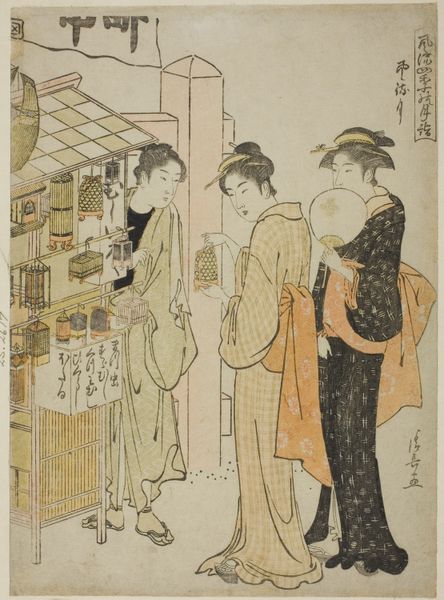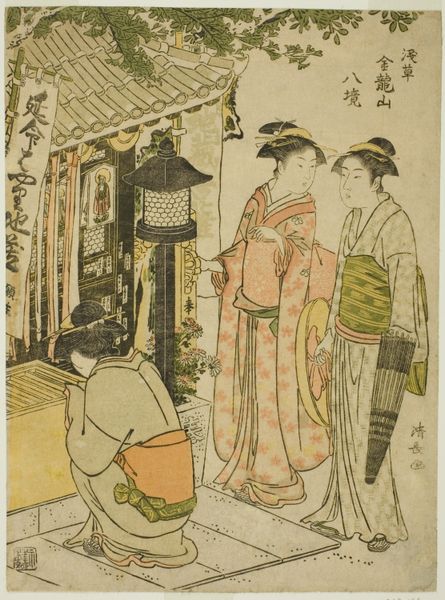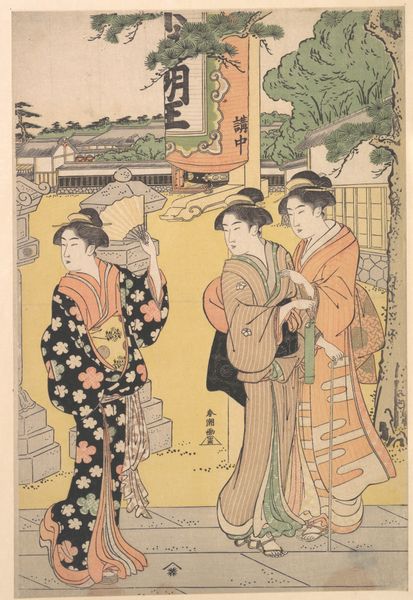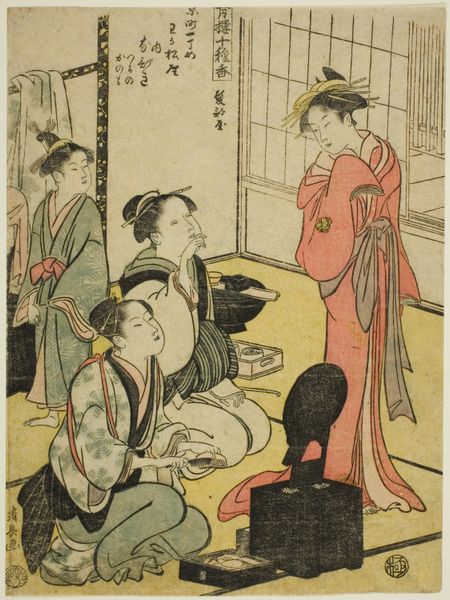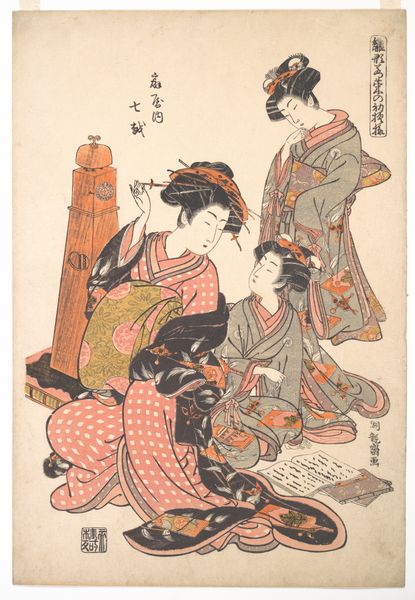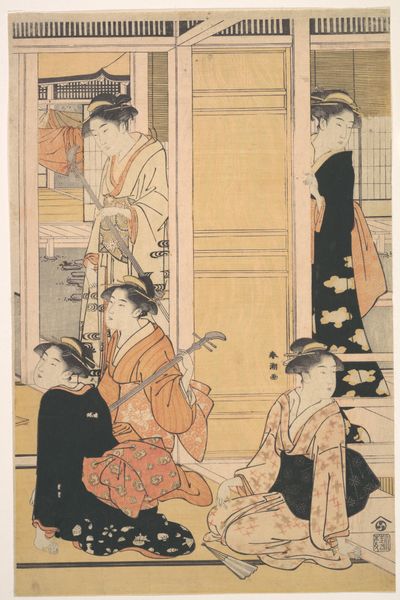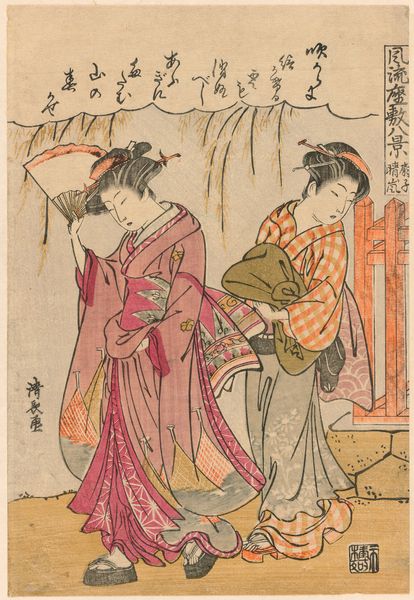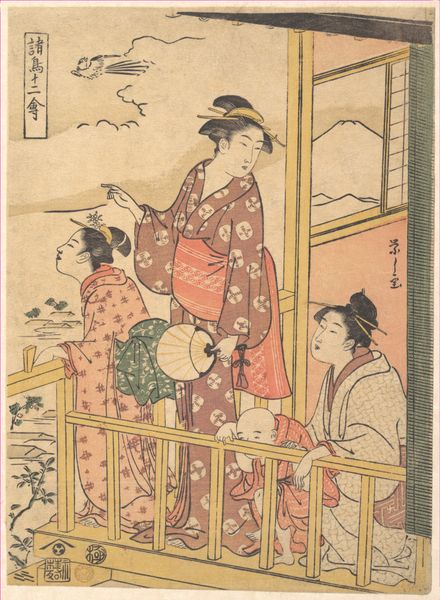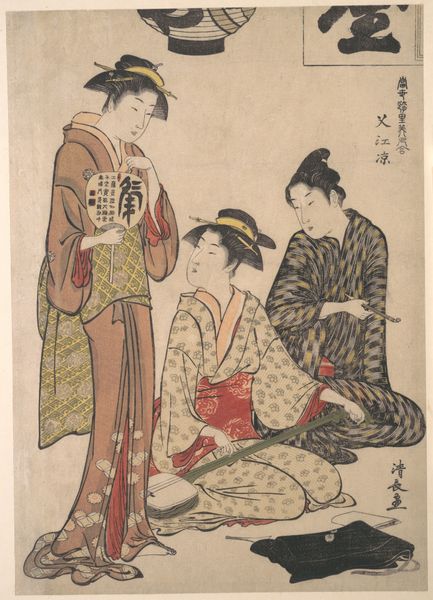
The Sixth Month (Kazemachizuki), from the series "Fashionable Monthly Visits to Sacred Places in the Four Seasons (Furyu shiki no tsuki mode)" c. 1784
0:00
0:00
Dimensions: 25.0 × 18.4 cm
Copyright: Public Domain
Curator: Torii Kiyonaga's woodblock print, "The Sixth Month," presents a tranquil snapshot of Edo-period life. Dating to around 1784, it's a subtle yet captivating image. Editor: There's a quiet elegance to it, isn't there? The palette is muted, almost pastel, lending a dreamlike quality to the scene. It almost feels unfinished due to the unprinted areas of the paper, as if capturing a fleeting moment rather than an immutable truth. Curator: Exactly. Consider the material context: woodblock printing demanded careful collaboration between the artist, carver, and printer. The very lines are testament to a collective labor. See how the linear composition and shallow depth emphasize flatness, typical of ukiyo-e prints? This isn't accidental, but an aesthetic choice linked to available materials and artisanal techniques. Editor: The kimonos are especially striking. Their intricate patterns indicate textile production and craftsmanship. We should acknowledge these details when talking about fashion. The way these lines define and refine form demonstrates an intimate relationship between function and form—labor made aesthetic. Curator: Precisely. Look, too, at the arrangement of these figures. The negative space becomes crucial in how we perceive each character's relationship to another, as a social choreography of observation and connection. Editor: The presence of cages… Are they perhaps purchasing crickets for enjoyment? What could be viewed as either decoration or simple pasttime is now viewed as labor in itself; hunting crickets from the surrounding environment to be placed and contained inside these little structures. The fact these objects are on display says something profound about material practices in everyday culture. Curator: A valid observation. I think by examining such everyday elements within the pictorial design, we uncover broader social conditions about what's considered both aesthetically pleasing and, conversely, perhaps exploitative or restricting. The beauty lies both within its formalism as well as where it implicates wider narratives concerning craft. Editor: Agreed. What begins as a seemingly delicate, fashionable scene becomes a window onto material economies and human experiences embedded inside craft production. Curator: This artwork presents much more to ponder after some close considerations about its art. Thank you for providing alternative points for consideration.
Comments
No comments
Be the first to comment and join the conversation on the ultimate creative platform.
